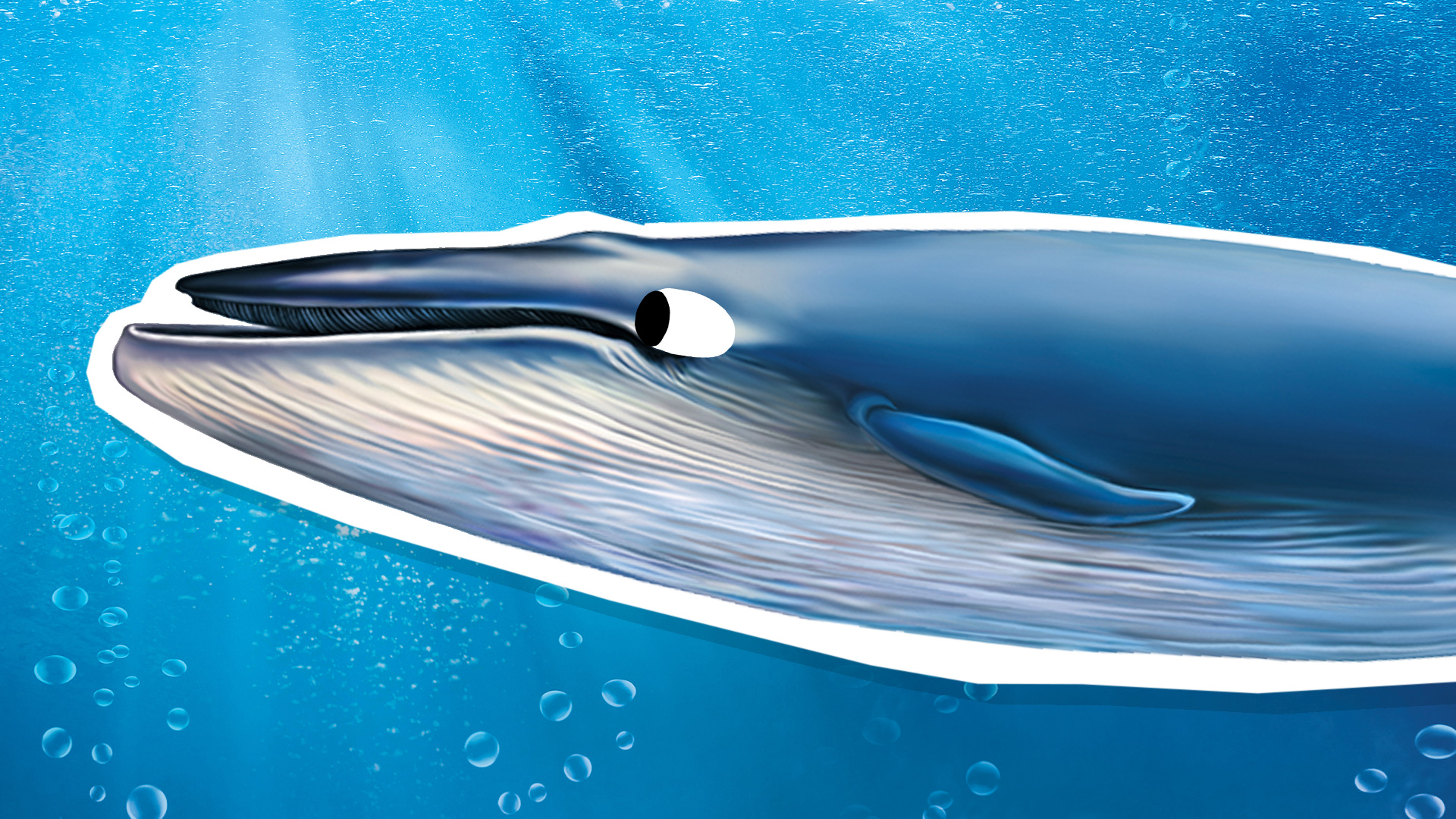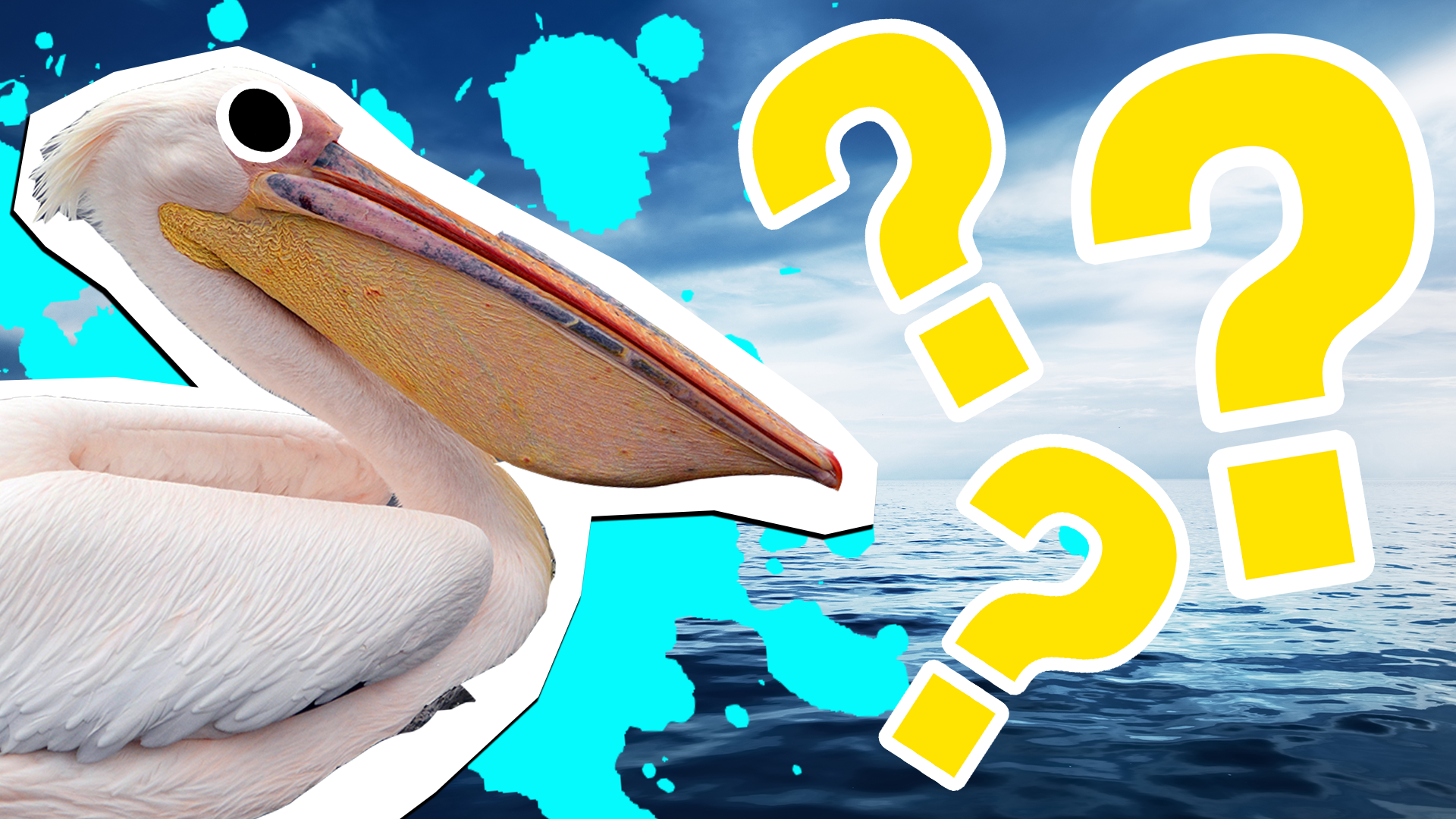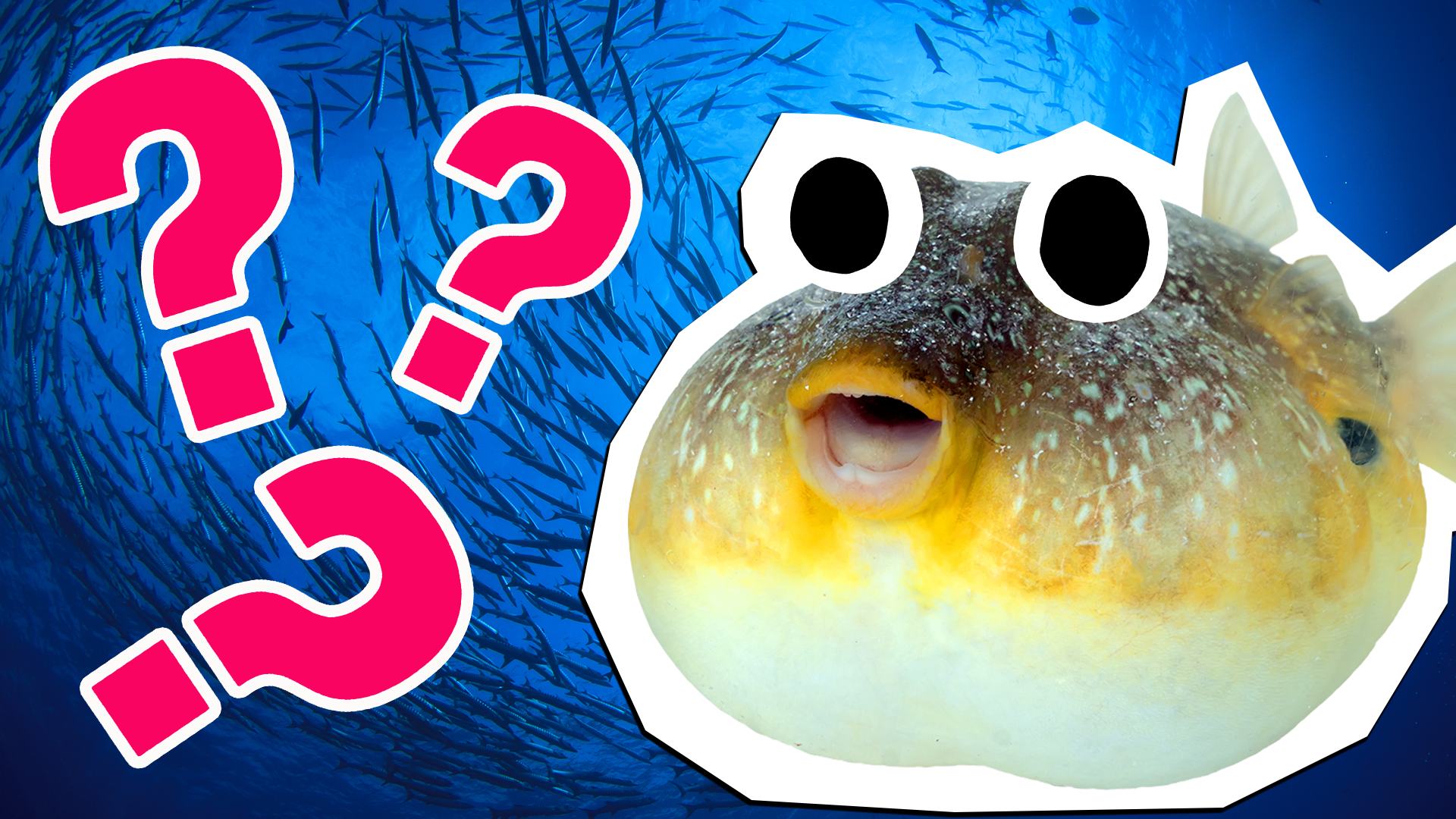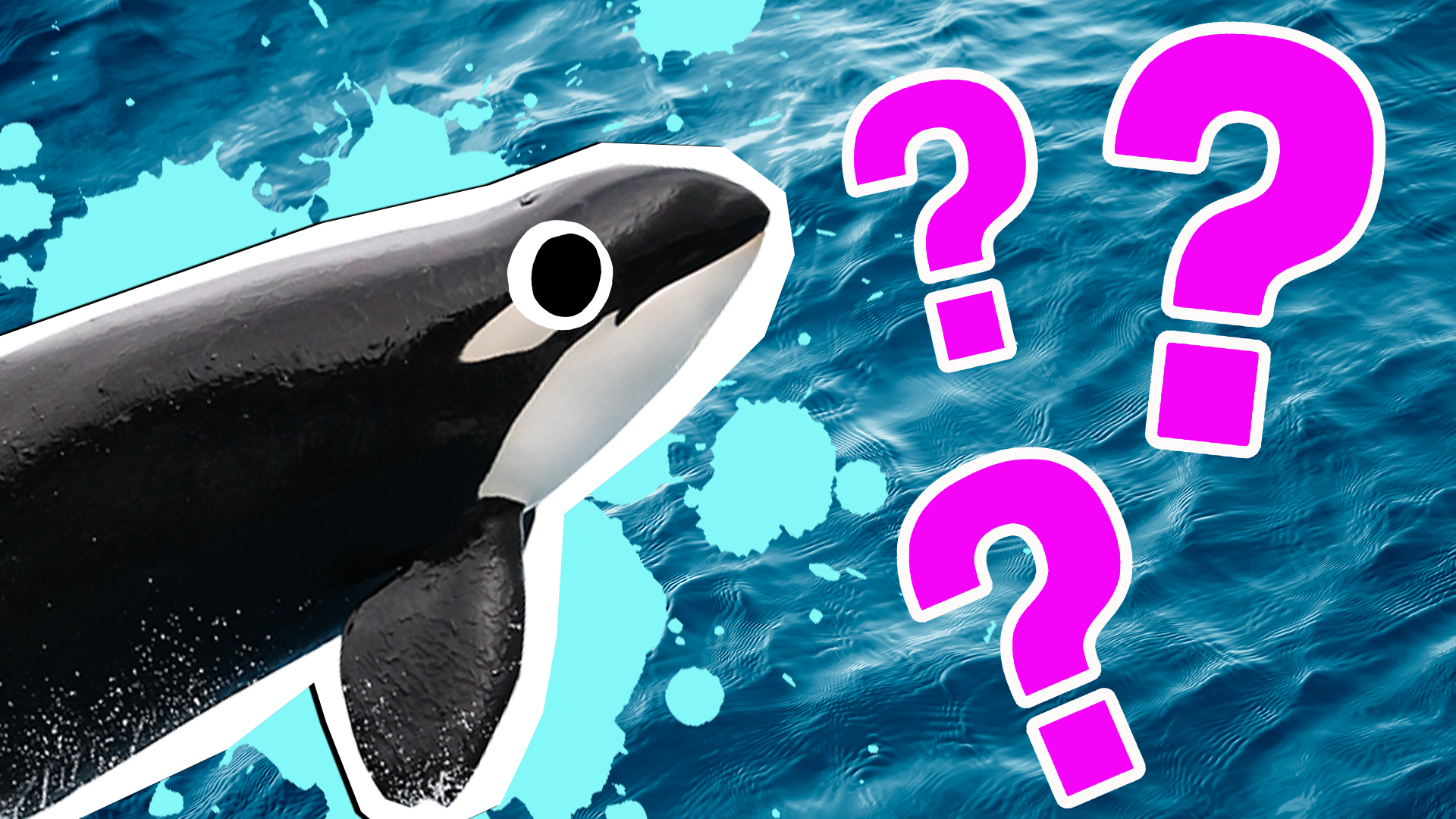15 Big-Brained Beluga Whale Facts!
They have many names, including the sea canary, the melonhead, and the white whale - but you probably just call them belugas! Learn all about these amazing sea giants!
If you just love sea creatures, there's a good chance you already know a thing or two about these gentle giants already - but we bet we've got something new for you to learn! Want to know why their heads are shaped like that, how much they need to eat - and why scientists are collecting their snot? Read on!
Want to learn more? We've got you covered! Click here to learn all about the Arctic circle, or here to learn about Antarctic animals!
1. They're the smallest whales!
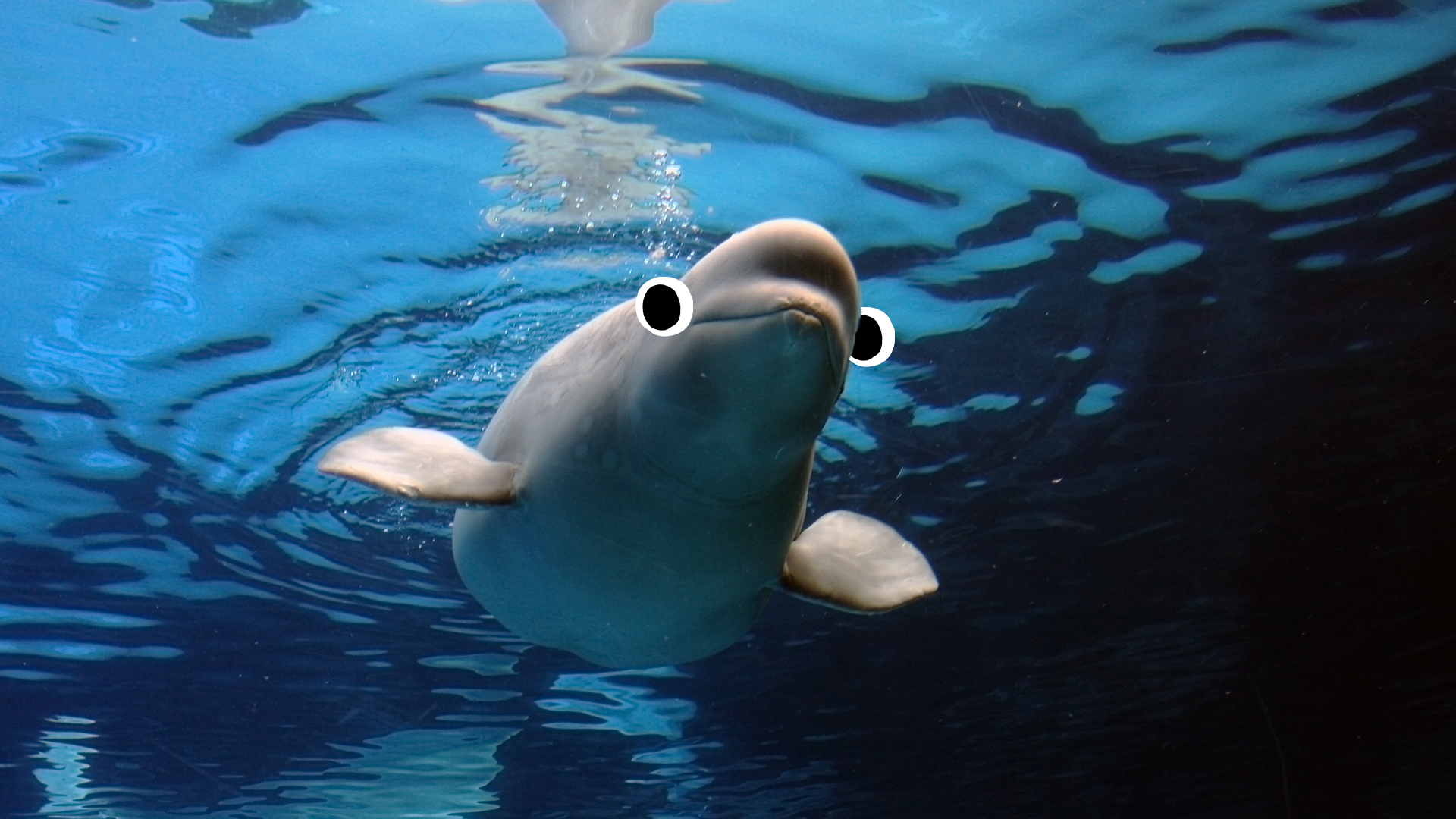
Belugas are members of the whale family (unlike orcas, which are actually dolphins)! They're the smallest members of the family, but they're still pretty bulky, with the males reaching 5.5 metres long and weighing up to 1600kg. The females usually reach about 4 metres and 1200kg. They're also pretty long-lived - it's thought that 70-80 years is the average!
2. They're noisy!
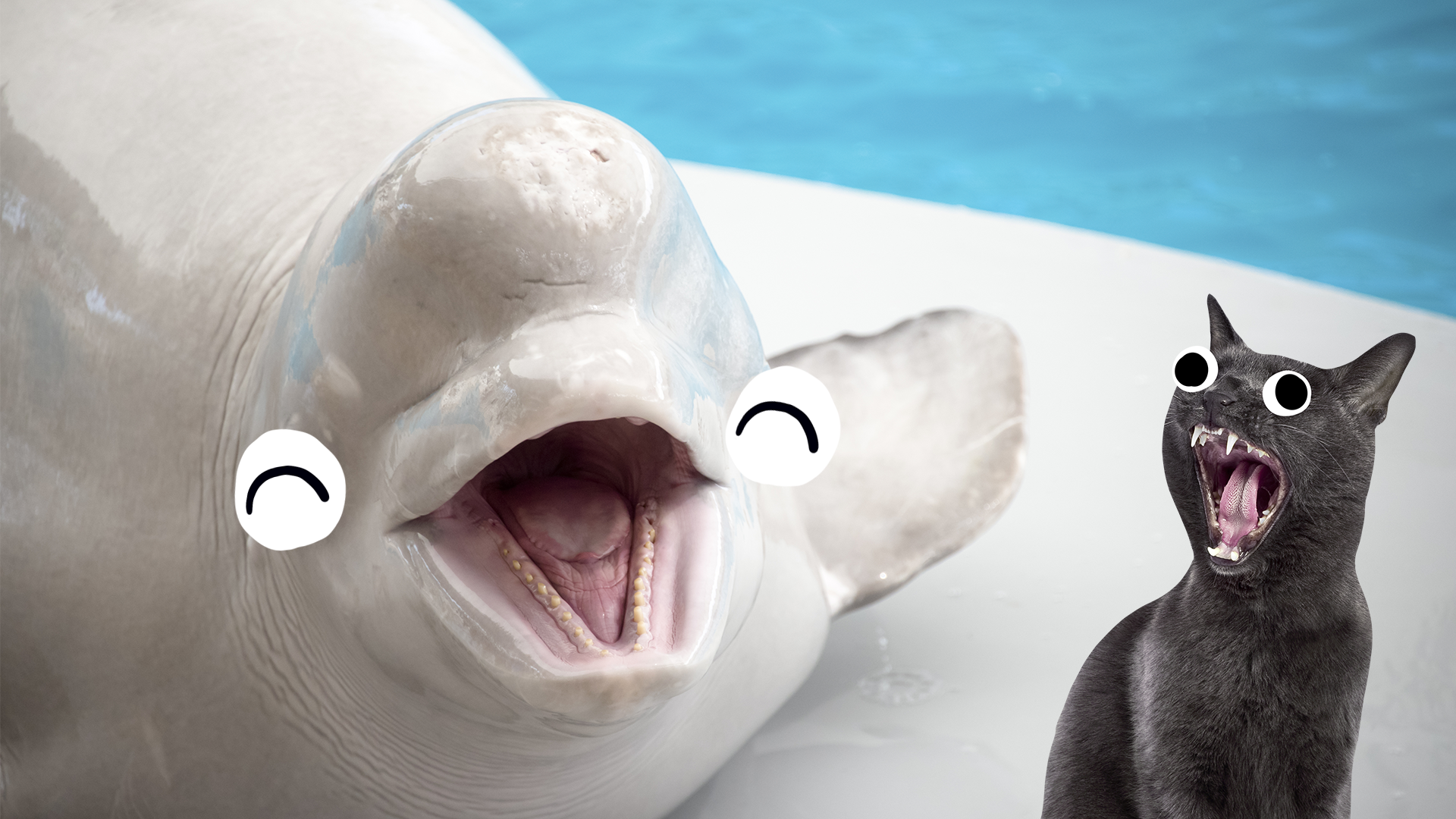
Belugas are known as sea canaries, and for a good reason! They have an enormous vocal range and are one of the chattiest species of whale. They're so noisy, you can hear them above water and even through the hull of a ship! Belugas don't have vocal cords; instead they make noises by shifting air in the nasal passages at their blowholes. Their noises include a variety of clicks, whistles, cackles, trills and squawks - a total of eleven different sounds! We recommend looking them up, because some of them are crazy. Why so noisy? Well, for one thing they don't use their body language to communicate, so words are important. For another, these high pitched sounds are the best way to communicate through water, especially murky water with low visibility. Belugas have a very unique biology that allows them to make these noises...
3. Their heads are amazing
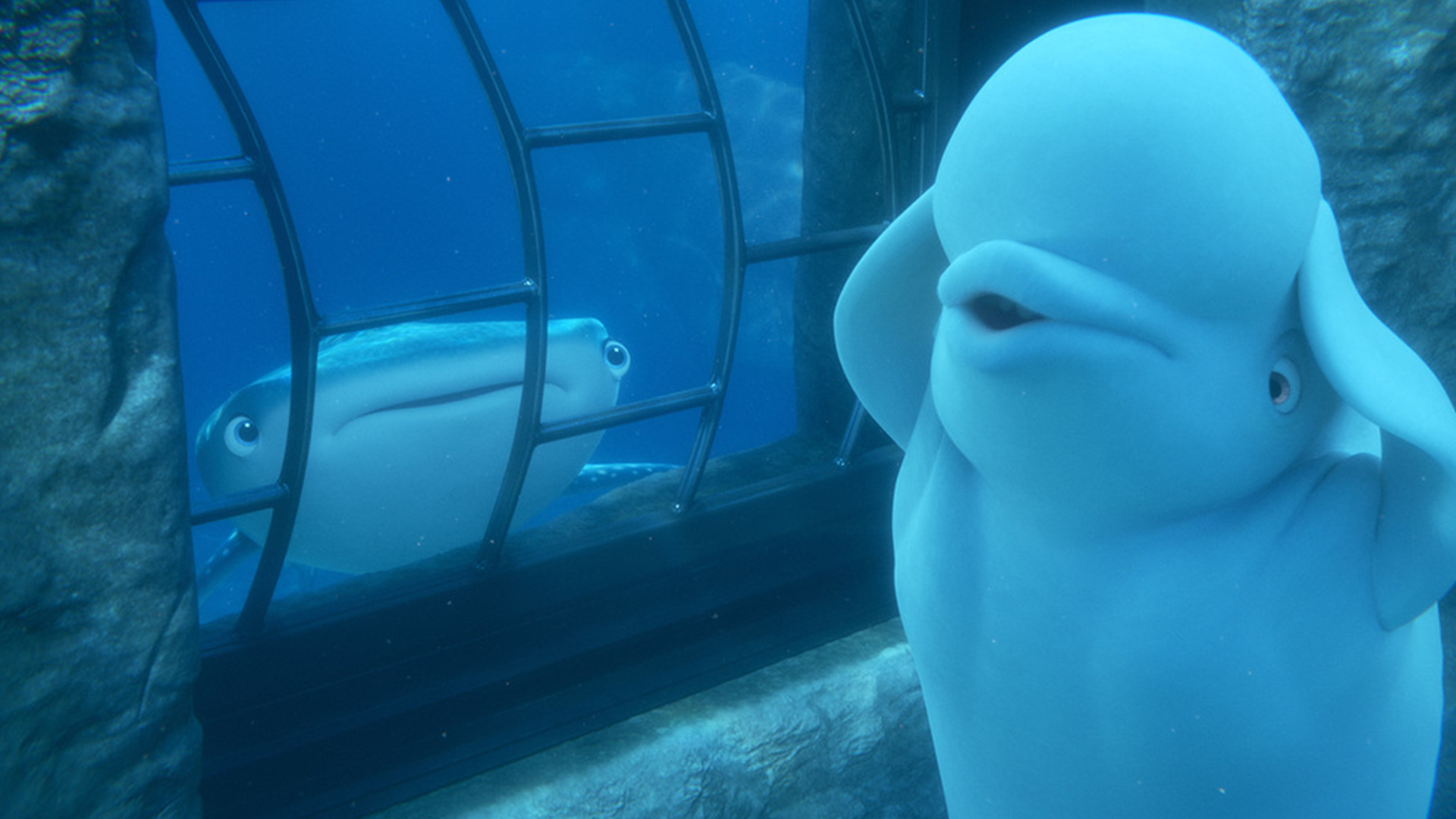
If you've seen Finding Dory, you already know a little about how belugas communicate and find their way around. The process is called echolocation, and their distinctive bubble-shaped foreheads play a huge part in making it happen. All toothed whales have an organ in their head called a "melon", which is basically a lump of fat that focuses and adjusts the sounds the whale makes, and makes it easier to hear other sounds. The beluga's melon is totally unique comapred to other toothed whales, because they can change its shape at will, producing some fascinating sounds!
4. They like it cold
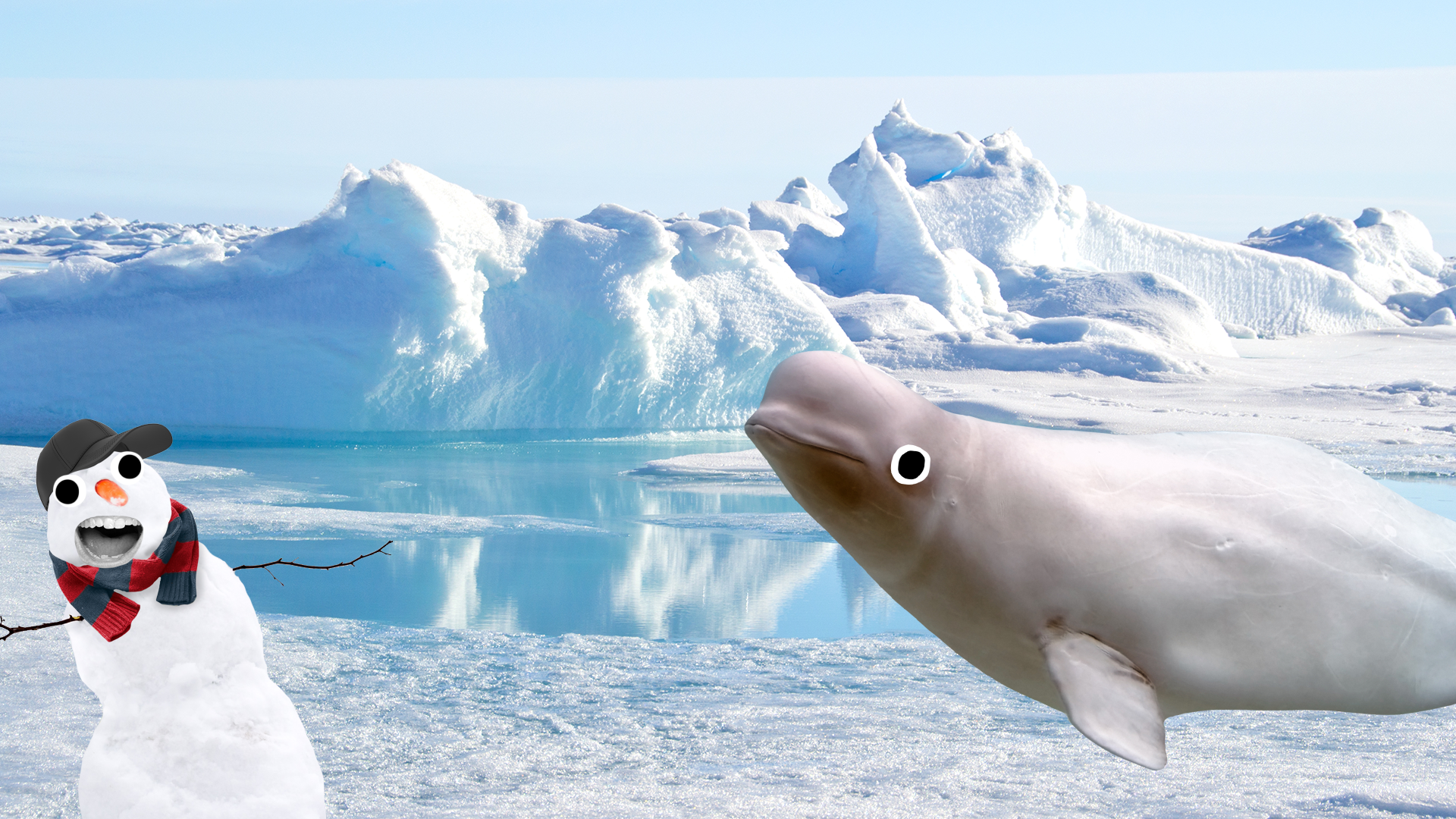
Belugas are mostly found in the freezing waters of the Arctic. To spot them in the wild, you'd need to head to Canada, Alaska, Greenland, or Northern Europe and Northern Asia. They're well-insulated against the cold though, with a 5-inch layer of insulating blubber keeping them warm. Up to 40-50% of a beluga's body weight can be pure blubber! That's not all, though - unlike other species of whale and dolphins, belugas don't have dorsal fins (the fin on the whale's back). It's thought that this is to preserve heat, and to allow them to move more easily through the ice. They have a hard crest on their backs instead, which helps them to break through ice. The genus name of the species is apterus, which means "wingless", a reference to their finless backs!
5. They're friendly!
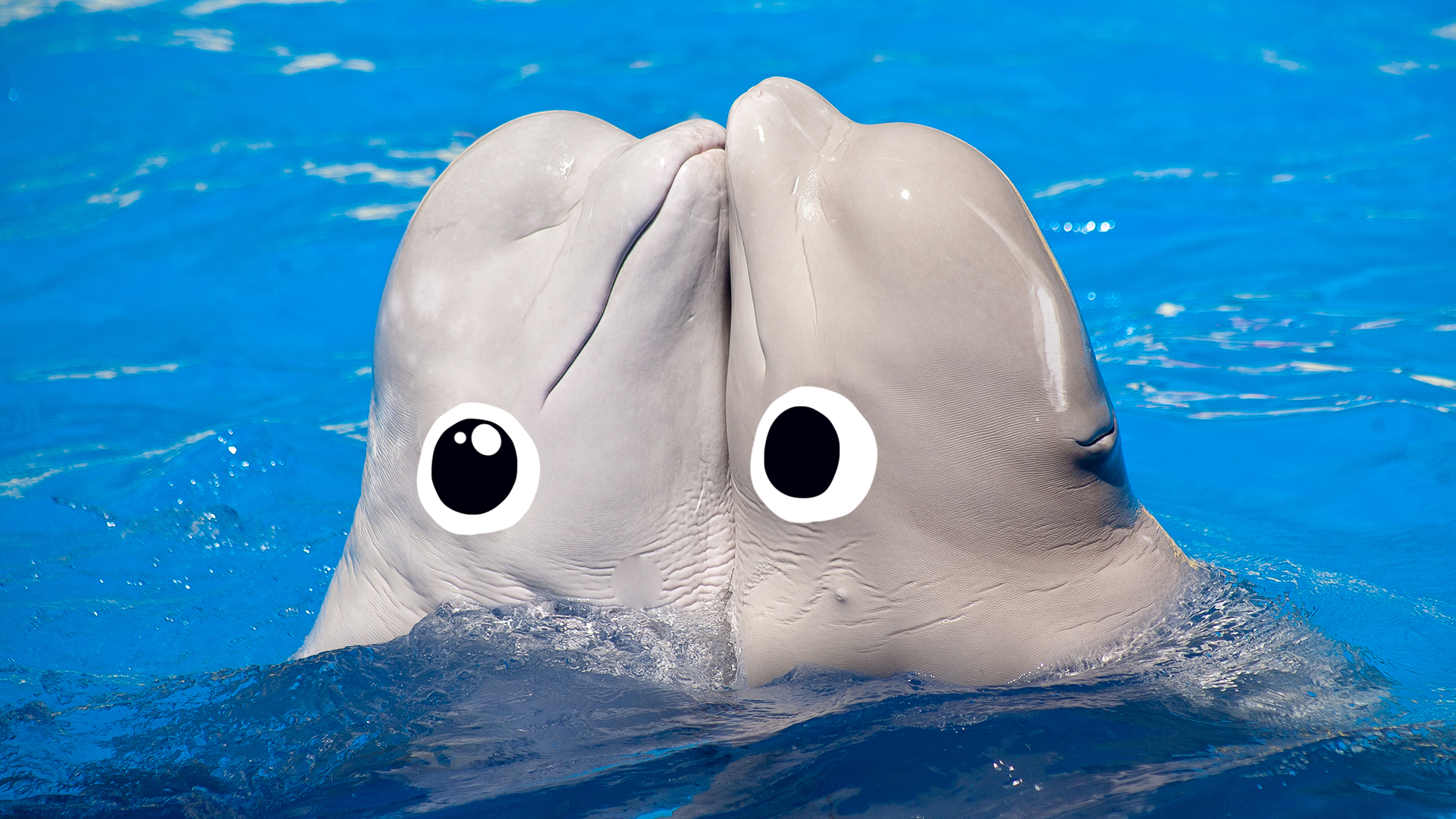
Like most whales, belugas live in large groups called pods. A beluga pod is pretty big, usually coming in at an average of ten animals, though the usual range can be anything between 2 and 25 whales. These pods aren't always fixed though - belugas have been observed moving between pods. They're very social in these pods, working together to capture prey, and playing in groups. One beluga game is for one whale to blow bubbles and the rest to swim around and pop them! They also seem to play a beluga version of "Simon Says", using their unique vocals. They're pretty friendly towards humans, too, and are often seen swimming up to boats. There's footage of them playing with manmade objects in the water, and even bobbing their heads along to music played from boats!
6. Researches are collecting their snot!

Gross but true! Whales surface to breathe, and the droplets they make when they exhale are called "blow". During the pandemic, you might remember hearing a lot about the droplets that come out when you sneeze - it's basically the same thing. Researchers in Canada are gathering beluga blow to study the stress levels of the animals, which helps to monitor climate change. How do you catch whale bogies, we hear you ask? Well, the answer is less sciency-sounding than you might think. One collection device is basically just a hanky on a long stick, and the hanky has been made up of all sorts of different materials, including bridal tulle and women's tights! It's all for science!
7. Their name comes from Russian
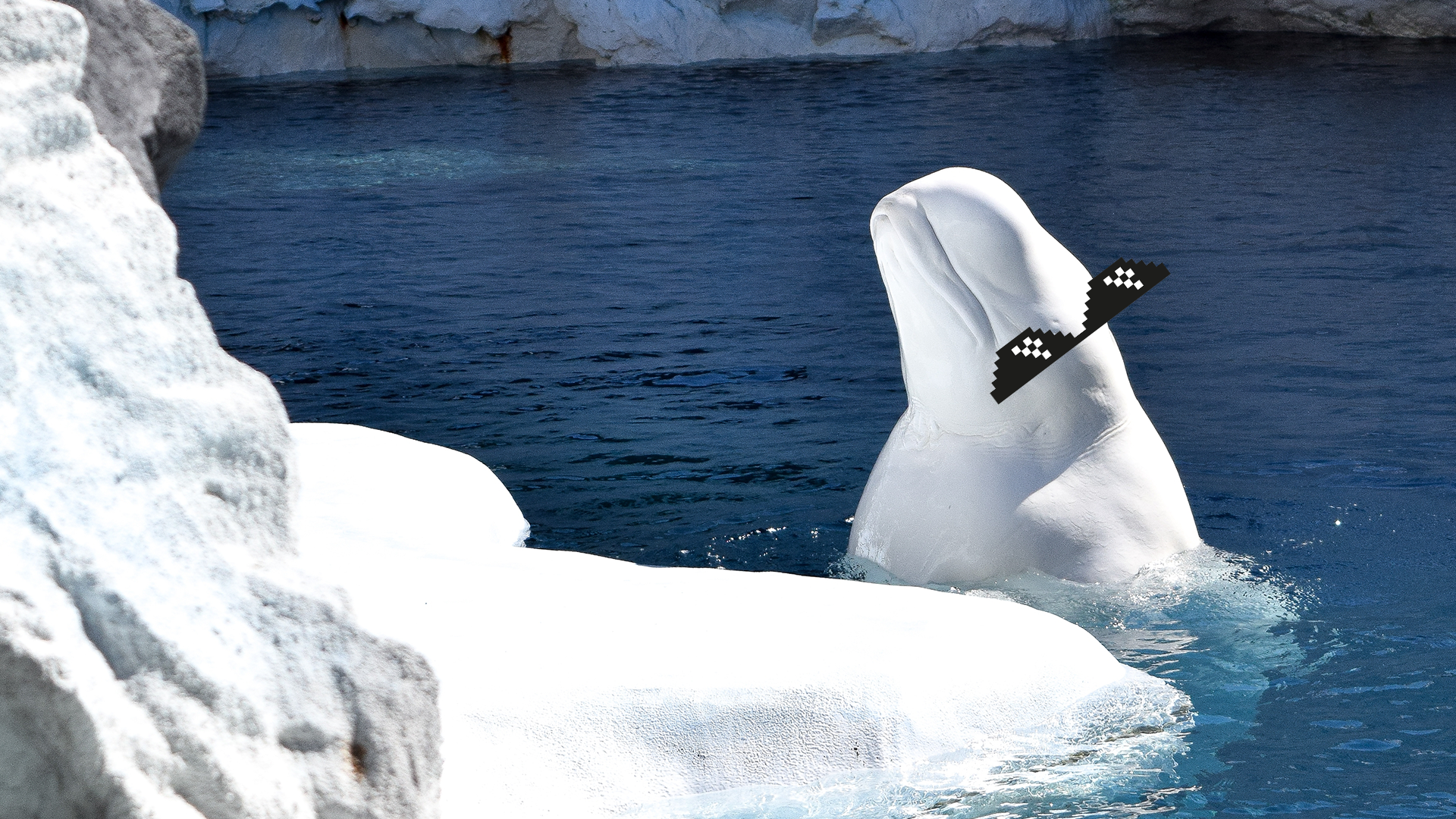
"Beluga" comes from the Russian word bielo, which means white. Their white colouring helps belugas blend into the sea ice, but they're actually grey when they're born! It can take up to eight years for them to turn completely white.
8. They go deep
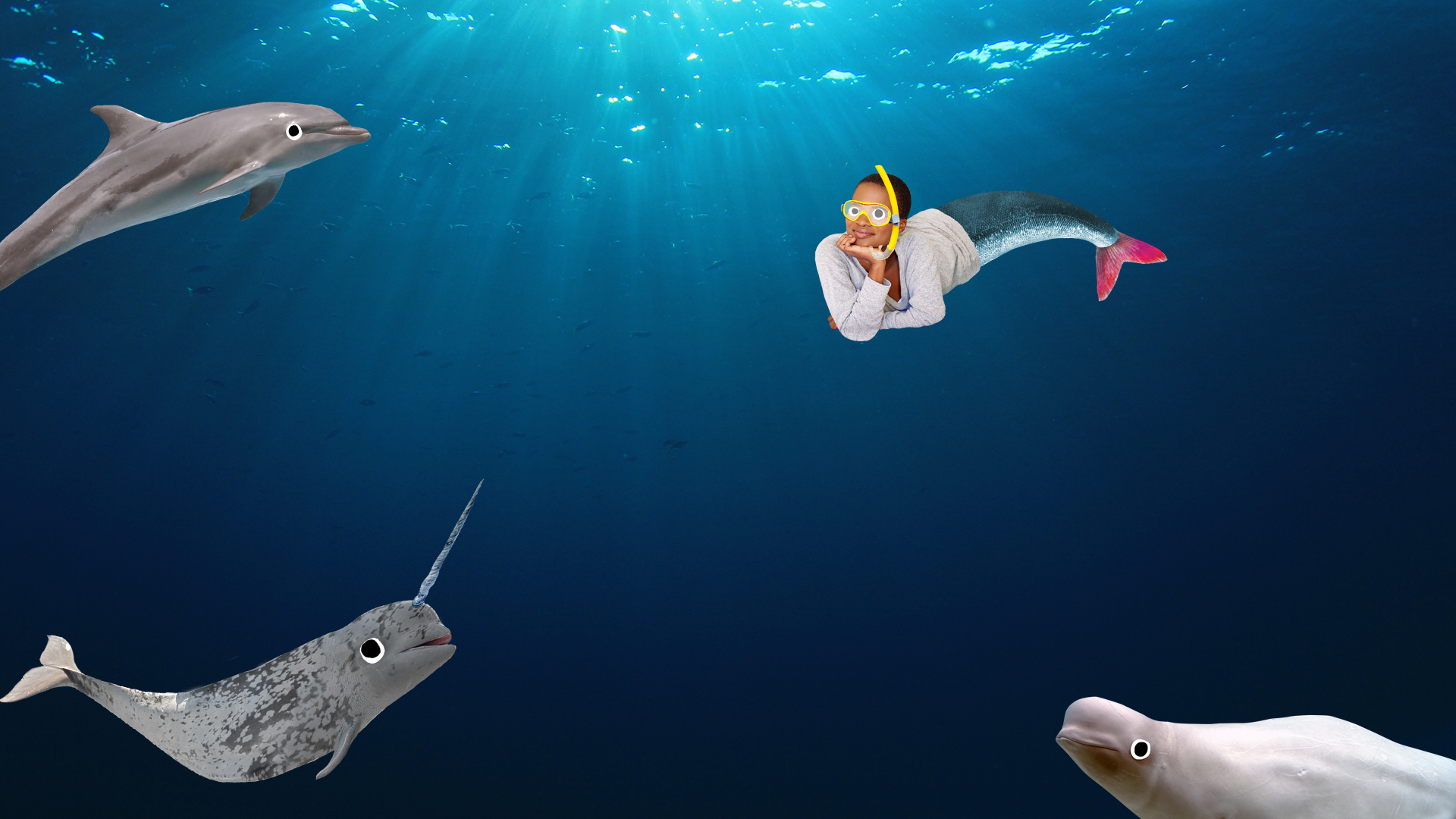
Belugas usually don't dive more than 20 metres, but they're capable of going MUCH deeper! Some have been recorded going up to 700 metres, with the deepest recorded depth an amazing 900 metres! They can't breathe underwater but can hold their breath for up to twenty minutes as they dive. Their amazing biology helps out during these long dives, reducing their heart beats and directing more blood towards essential organs to keep them oxygenated.
9. Their heads are amazing: Part 2
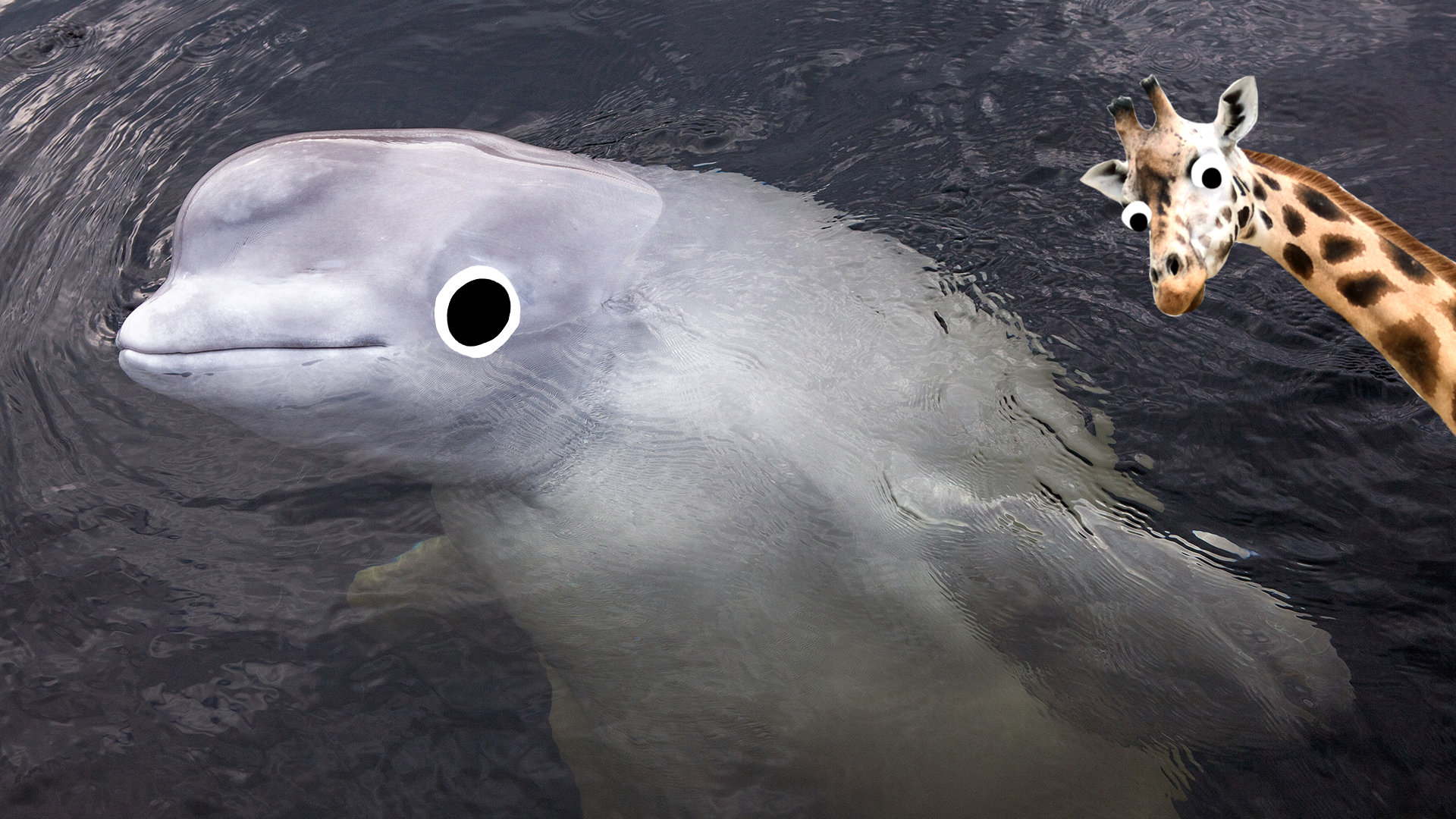
That melon isn't the only interesting thing above a beluga's shoulders (if they had shoulders, that is). Unlike most whales and dolphins, the vertebrae (the knobbly sections in the spine) in a beluga's neck are not fused together, which gives them an amazing range of mobility. They can turn their heads without moving their bodies - perfect for catching prey and escaping predators!
10. They eat a LOT
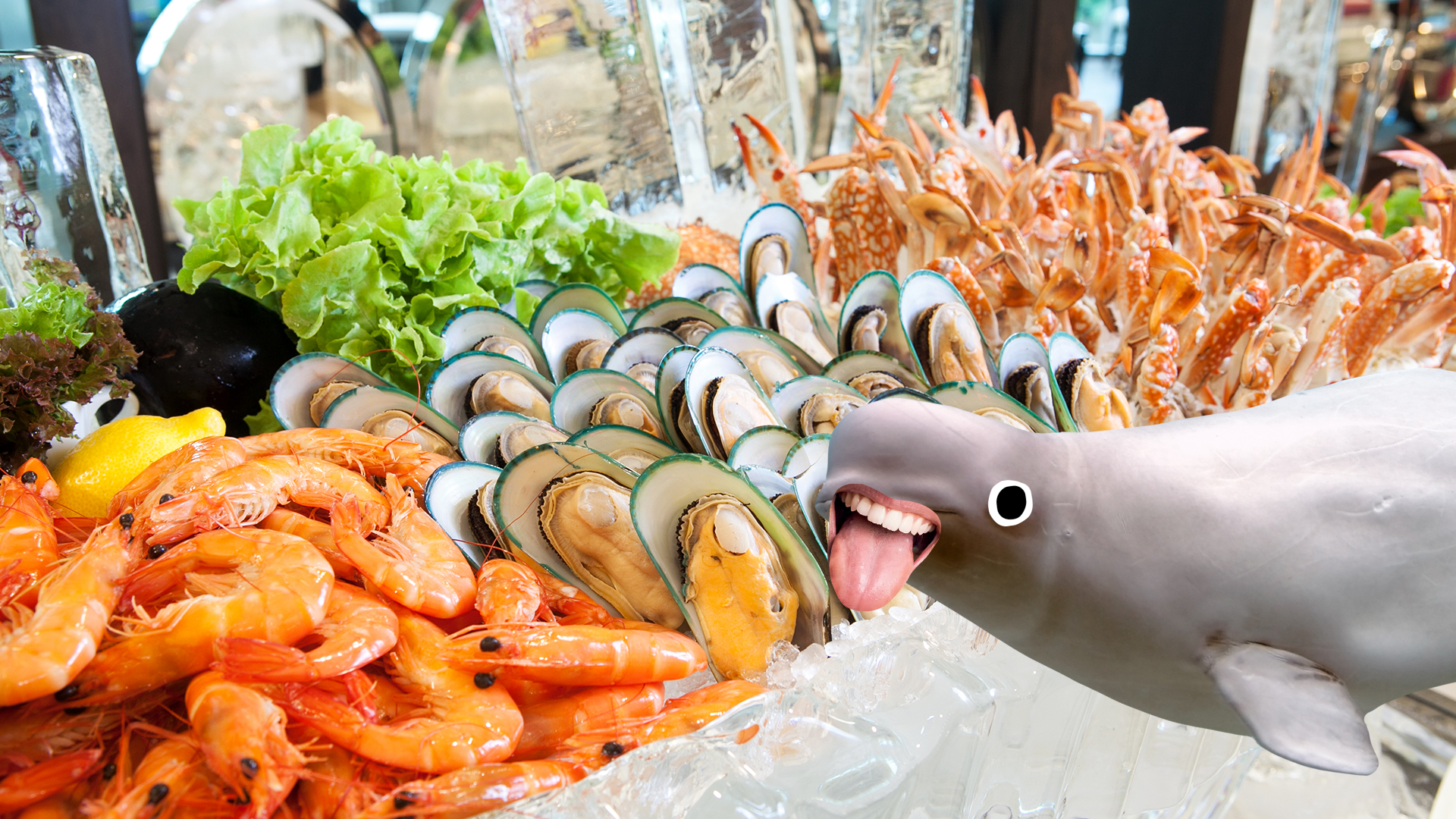
The beluga eats an average of 27kg of food per DAY! For comparison, a single serving of pasta for an adult is 75g, so 27kg of pasta would be enough for 360 people! They're not very picky eaters, and feast on octopuses, shrimp, crabs, squid, clams, bristle worms and sea snails, as well as lots of different types of fish. Despite their sharp teeth, they prefer to swallow their prey whole. But belugas are also on the menu for bigger predators - polar bears and killer whales love to snack on them!
11. They're slow swimmers
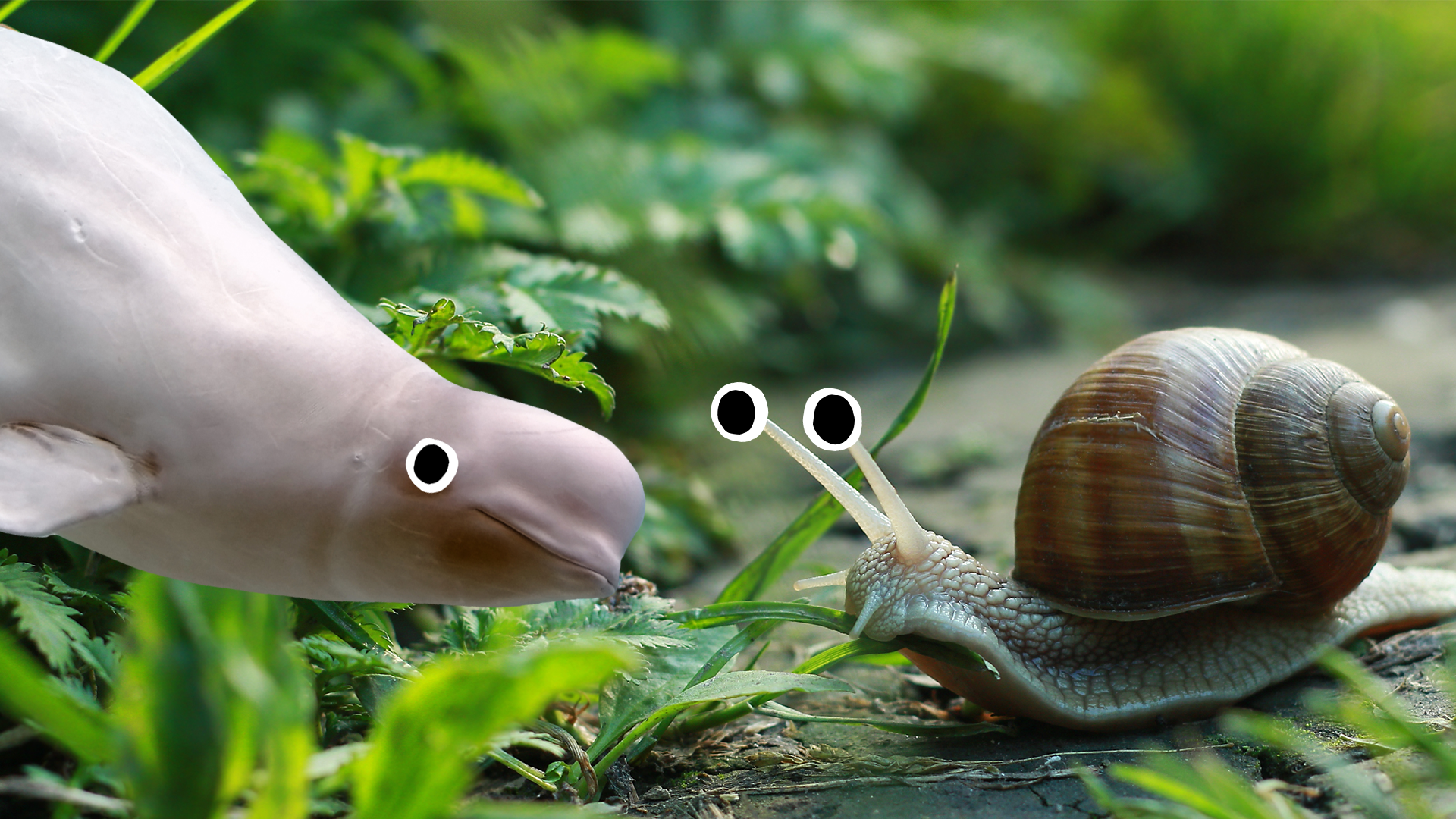
Despite their relatively small size, belugas prefer to take things slow. They tend to travel at a relaxed 14mph, which is about half the speed of an orca. They are, however, capable of swimming backwards!
12. They're very popular

Belugas were among the first whales to be held and displayed in captivity. The first public showing of a beluga was at Barnum's Museum in New York City, all the way back in 1861! They're now the only whales still put on display in aquaria and theme parks, and they're extremely popular with visitors. They're considered "charismatic megafauna", which is a large animal considered especially popular and appealing to the general public. It's easy to see why - not only are they curious and charming, they also look like they're smiling! There are some debates about keeping them in captivity, though they generally seem better suited to it than other large sea mammals like orcas.
13. They moult!
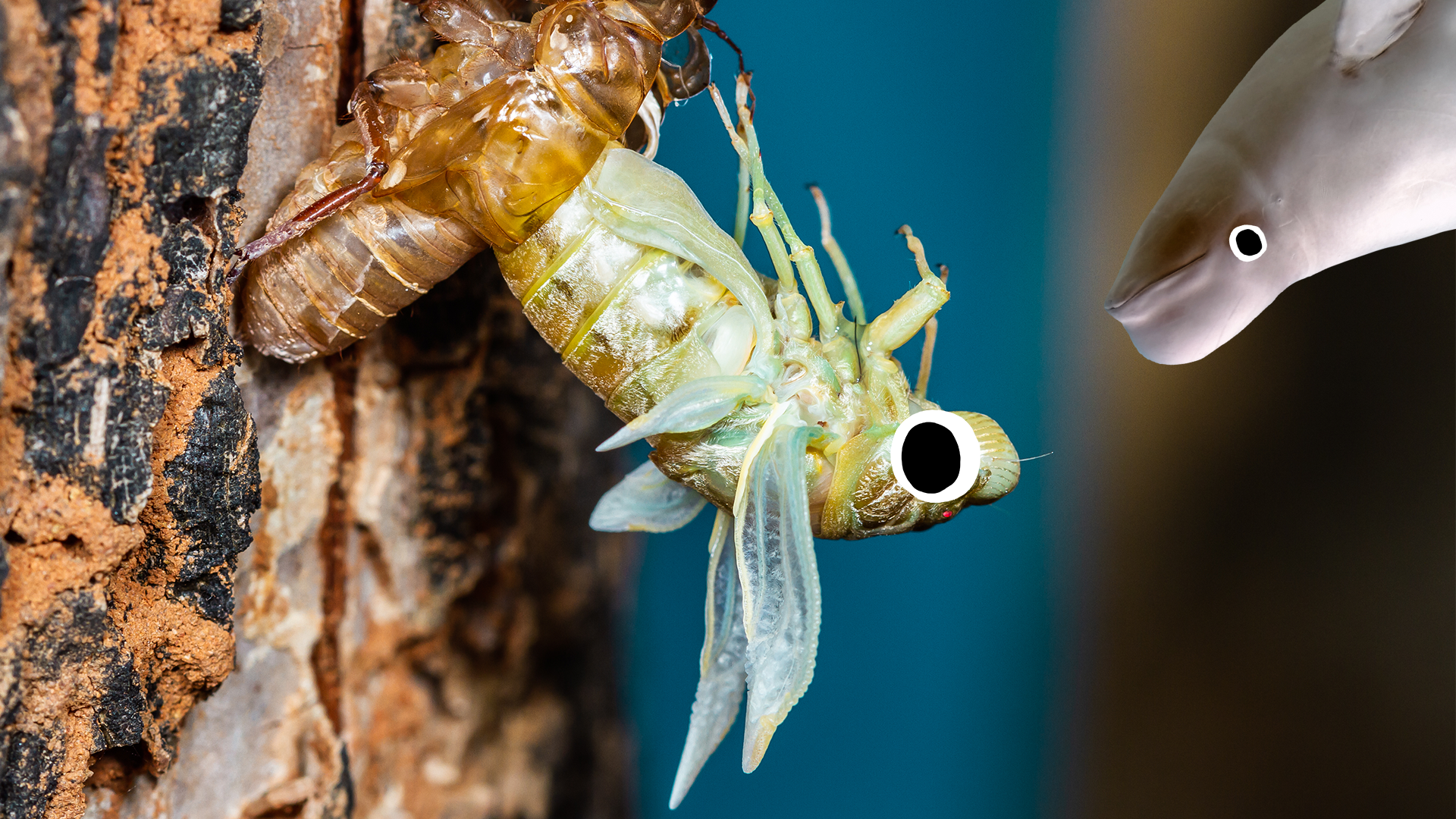
Insects, spiders and reptiles aren't the only creatures that shed their skin - belugas do it too! During the warmer summer months they rub themselves on rocks and gravel in riverbeds to shed their outer layer. Speaking of rivers...
14. They sometimes swim up rivers
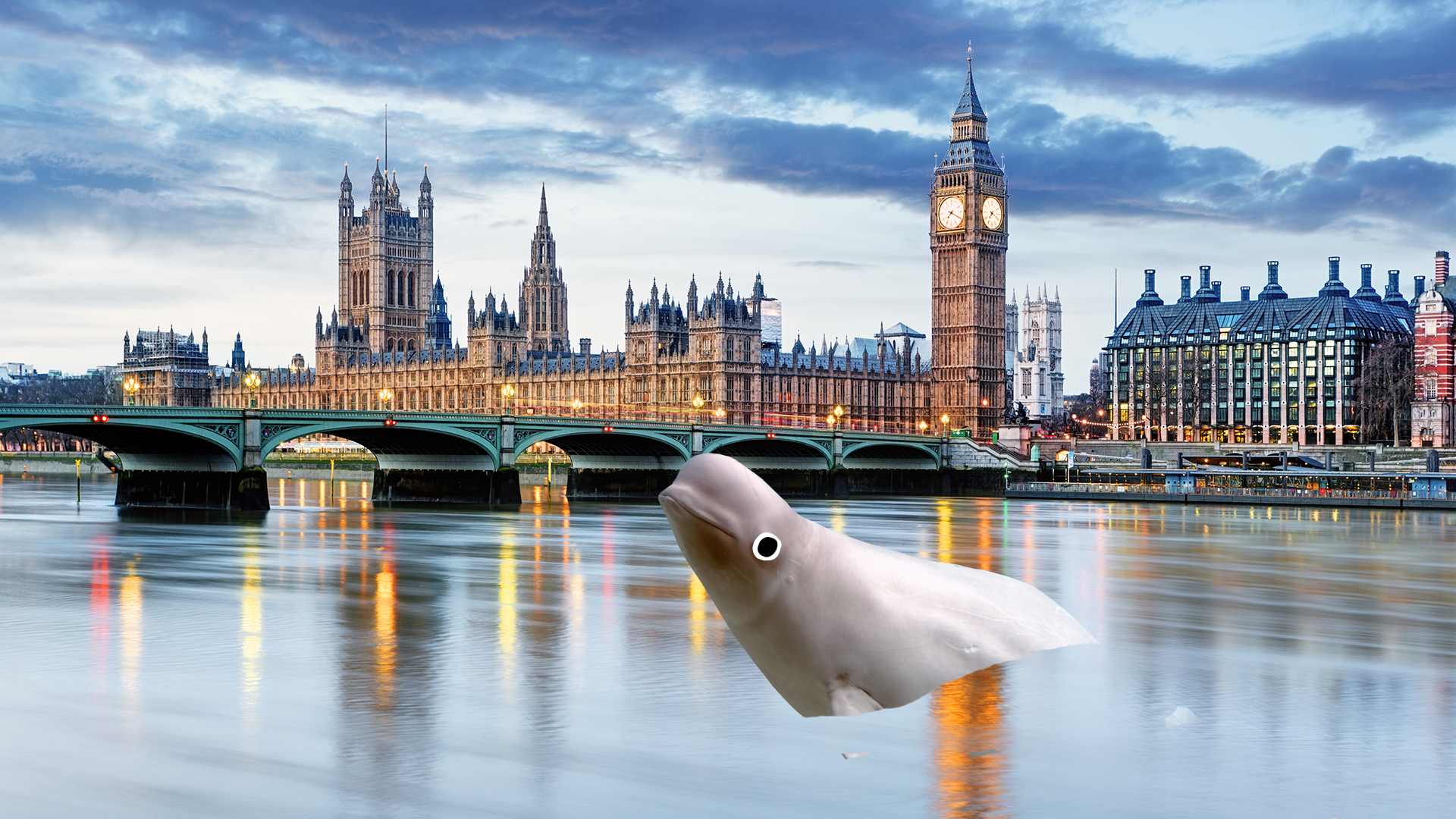
Despite enjoying the ice-cold Arctic in winter, belugas are migratory and will head to warmer climates in the summer. It's like a summer holiday! They often join together in larger pods during this migration, and swim into river estuaries to eat, socialise, exfoliate, and have their babies in a safe place with no orcas. Occasionally they'll swim further up rivers though, which can be dangerous if they can't find their way back out again. In 2019 a beluga named Benny spent three months in the Thames, mostly near Gravesend. Though he wasn't spotted leaving, experts are confident that he swam out of his own accord and headed north again.
15. They face some threats
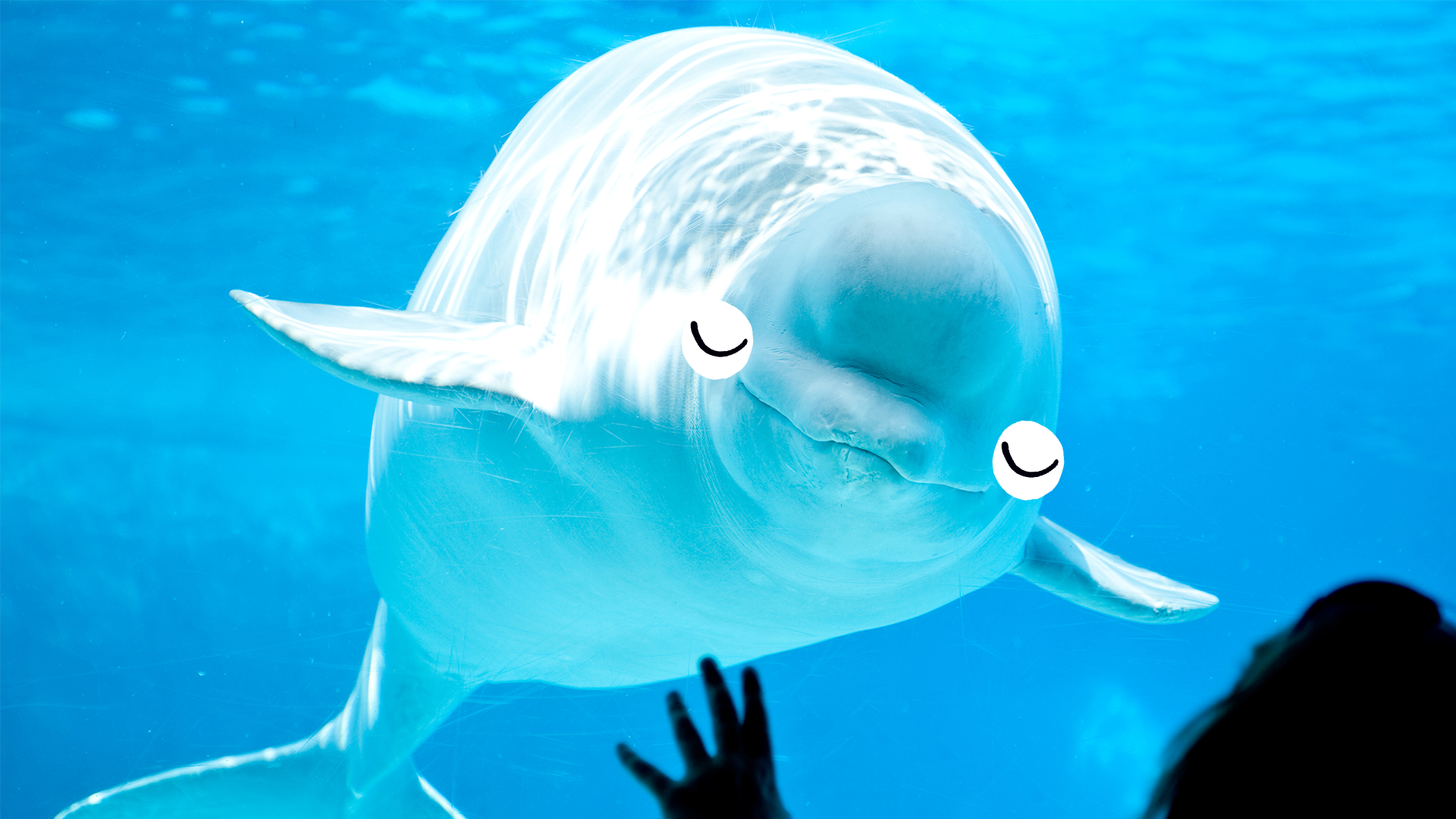
Lots of interesting animals are unfortunately endangered, but good news - belugas are on the "Least Concern" list! That means that the overall population is at a healthy number, though a specific subpopulation of belugas in Alaska are considered critically endangered, and there are still threats and concerns facing the rest of the population. One of these is of course climate change, which will affect their diet and reproduction. Pollution and disease also threaten them, and one problem you might not have thought about before is noise pollution. Great hearing is the beluga's superpower, but it also means that they are particularly sensitive to loud manmade noises. This includes sonar waves and the loud engine sounds made by fishing, military and commercial boats, which are very distressing to the sensitive melon of the beluga.






